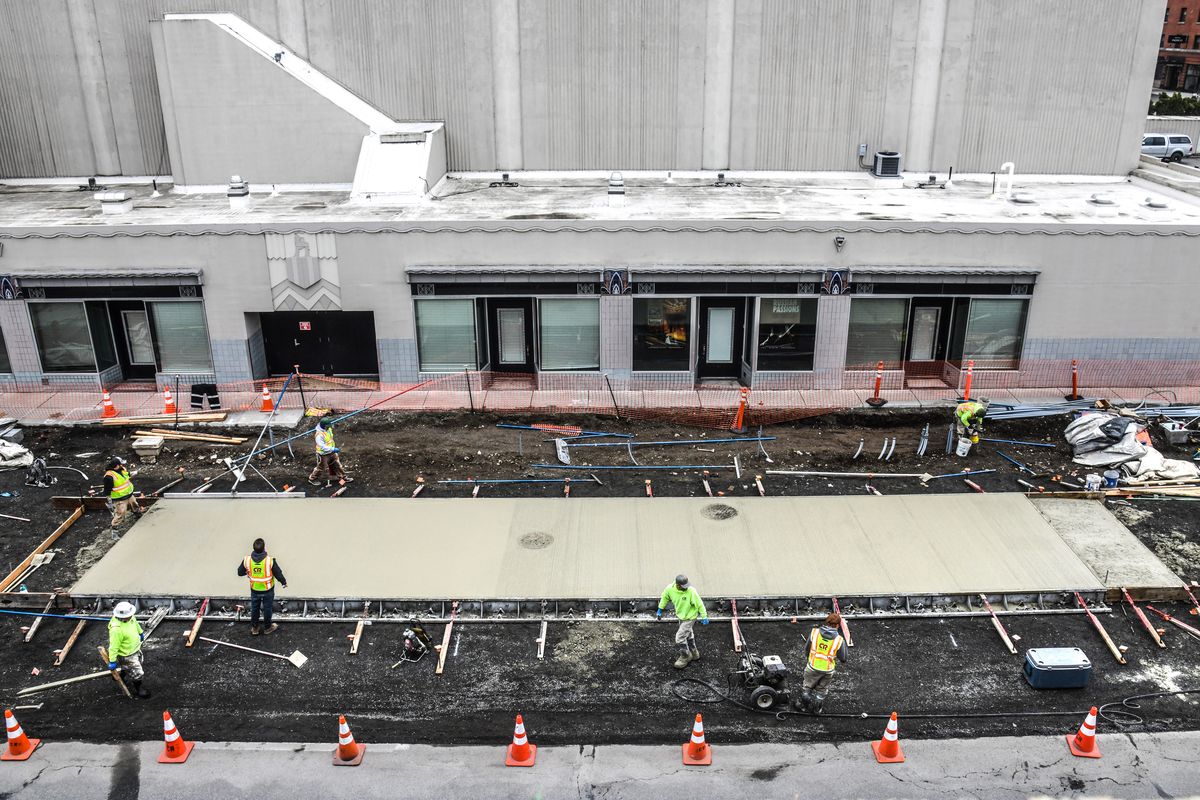Spokane’s city transit line will have to wait another year, slated to open July 2023

A new Spokane bus route envisioned as a continuous and quick loop through downtown linking Browne’s Addition with the Spokane Community College campus has been delayed for at least a year.
Commonly called the City Line, construction crews have been building ramps and concrete platforms that bump out from the curb throughout the route. But the special buses won’t start running until July 2023, the Spokane Transit Authority announced Thursday.
The year delay follows a national shortage on rolled-tube steel, which the authority planned to use as structural support for the bus station shelters, said Brandon Rapez-Betty, STA’s communications and customer service director.
“We looked at everything we could possibly do, including changing the shelters altogether,” Rapez-Betty said. “But this shelter was designed uniquely for the city line. And this is the shelter that we showed to the public when we talked about this project. … To change entirely, this late in the game, felt like it would be changing course without the input of the public who saw the original design.”
Construction on the $92.2 million project started in May 2020. The buses almost act as “electric trolleys,” Rapez-Betty said, with the bus in mixed traffic. The authority also promised a wait time of 7 ½ minutes, Rapez-Betty said, “so people can use it without having to know the schedule, they can just walk out to a station and hop on.”
Funding for the transit route came from state and federal grants, including a $53.4 million grant from the U.S. Department of Transportation in early 2020.
When completed, the new bus system will follow a 6-mile route between Browne’s Addition and Spokane Community College, connecting to downtown and the University District, according to the Spokane Transit website.
Officials expect the new route to generate $175 million over 20 years. Before the pandemic, operating costs were estimated at $4.1 million annually, but “that number will have to be reevaluated in light of dramatically changing costs during the prolonged pandemic,” Rapez-Betty said in a follow-up email.
The 60-foot-long vibrant purple buses will be battery-powered and emission-free, Rapez-Betty said. They will also have near-level boarding, where there’s no step to get from the platform to the bus floor.
“It’s an increase in access to public transit. … There’s more access to downtown, and there’s more opportunity to travel in downtown via transit because of the frequency of the stops,” Rapez-Betty said.